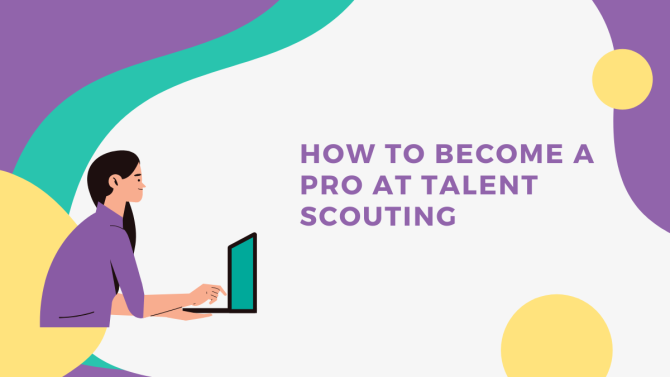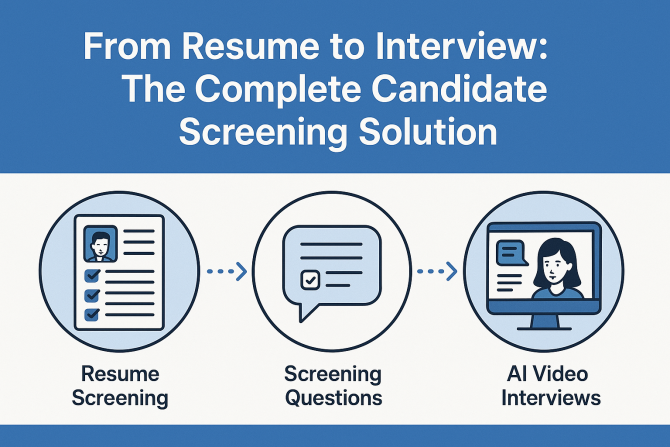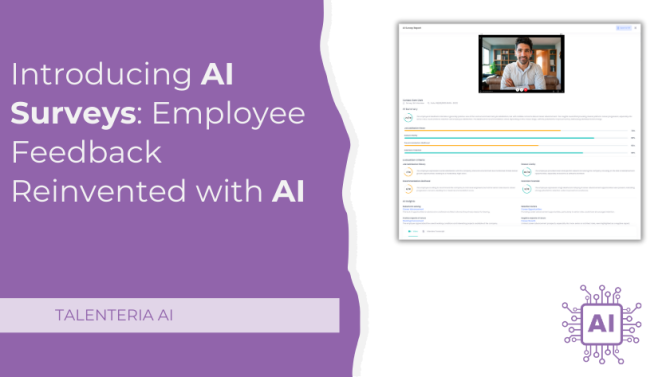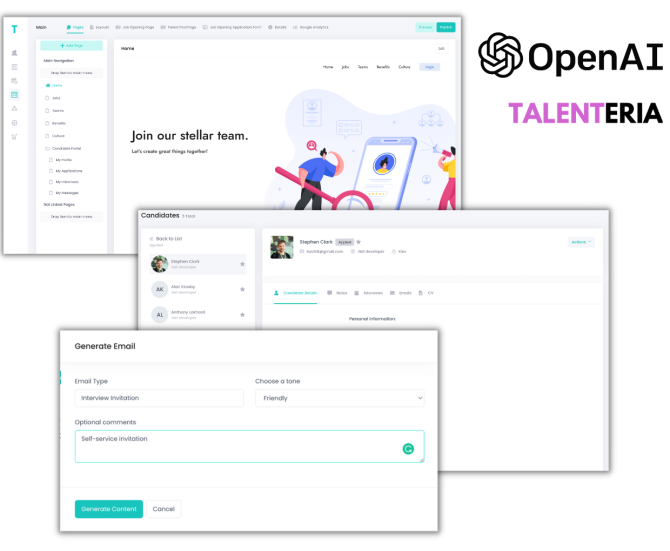
When you think of a talent scout, you may conjure up images of some slick, well-dressed person looking for the next Hollywood superstar or someone approaching the prodigious quarterback who just threw a 75-yard touchdown pass. But talent scouting isn't just exclusive to showbiz and sports. In fact, the practice of talent scouting can be found across various business and tech-related industries, too, and many other industries!
Scouting for talent is a talent in and of itself and plays a crucial role in the talent acquisition and recruitment process. But what exactly does talent scouting entail, why is it so important, and how can you improve your talent for talent scouting?
What Is Talent Scouting?
A talent scout is more than just a run-of-the-mill recruiter. What sets a talent scout apart from a recruiter is their forward-thinking ability to spot rising stars. Thus, a talent scout definition encompasses a greater emphasis on discovering the obvious or hidden potential in a candidate, prime for future development rather than solely on the skills and competencies already demonstrated by them. This means that the techniques and evaluation strategies also involve the cultivation and nurturing of potential, which takes things one step further than regular recruitment.
Why Is Talent Scouting Important?
Quite simply, when talent scouting is done well, it can drastically enhance the quality of new hires and decrease employee retention rates. Any professional involved in, or familiar with, the recruitment process in any capacity will know that these are two of the most vital aspects that all companies consistently seek to improve.
By taking into account the future prospects of a soon-to-be employee, a company is also considering its own future prospects. Therefore, it is easy to deduce that having an efficient and effective talent scouting strategy is essential for company success.
Furthermore, with an exceptional talent scouting strategy in place, your company will be a major competitor for top-tier candidates. You will be able to source and attract the most sought-after talent on the market.
How to Become a Pro at Talent Scouting
Here are our top tips on how to get the best candidates into your pipeline:
1. Develop a Talent Plan
Talent scouting is a business imperative, especially in the current labor environment. An effective talent scouting strategy will align with company objectives across all departments. Therefore, developing a talent strategy starts with a talent plan. You must first identify the objectives and milestones the company wishes to achieve in order to know what talent is required to achieve them.
Included in your talent plan should be to build a candidate persona. This can help you create a framework and have a clearer conceptualization of your ideal candidate.
2. Get a Head Start
They say the early bird catches the worm; well, this analogy could not ring truer when it comes to scouting for talent. In recent years, the labor market has leaned towards the high-quality applicant's advantage. Statistics have consistently shown around half of the HR departments across America are expressing difficulties in finding skilled people to fill positions.
This means that there are more hungry birds out there fighting over the scarce supply of worms. If you are a bird that waits until it is famished to look for worms, you might realize that other birds have already eaten all the worms, and the few worms left in a vast landscape are even harder to find.
The same can be said when it comes to talent scouting. Waiting to begin searching for talent only when a vacancy has opened up and a job listing has been posted could already be too late. To avoid this setback, you should take preliminary steps to identify skills gaps in your workforce and anticipate future job openings before they are official. This way, you can begin your search as soon as possible.
4. Use Social Media
Broaden your search base to locations where particular top-quality candidates are likely to be found and engaged. Popular hiring destinations these days include Facebook, LinkedIn, and Github. It's no secret that Github is a mecca for tech talent, so if you are scouting for talent concerning software engineering and development – this would be a great place to explore.
LinkedIn is also a prevalent hunting ground for recruiters as it can be useful to authenticate candidate skillsets, see who they are linked to, and get verified testimonials. Networking through LinkedIn is also a great way to get referrals or keep an eye on up-and-coming talent.
5. Market Your Brand
A secondary use for social media is to market your brand. Social media and the internet are now the most influential ways to increase candidate engagement. There really is no better or cost-effective way to guarantee a wide viewership than to have your company's social media accounts consistently active.
By implementing an effective outreach strategy tailored to your target candidate persona, you can raise awareness of your company, mission, values, benefits, and, more importantly, your vacancies. Link them to your official website or directly to your careers page to convert spectators into candidates.
6. Encourage Referrals
In keeping with the bird analogies, birds of a feather tend to flock together. By this logic, your current high-quality employees may have friends with similar skillsets and quality of character that could be looking for a career opportunity.
Expand your network of talent with your workforce network. Incentivize your workforce to make referrals by offering rewards and cash bonuses with the money you save from avoiding an entire recruitment cycle.
7. Build an Internal Labor Market
In addition to getting referrals, another way to build an internal labor market is to revisit past candidates who narrowly missed the cut for previous posts and shortlist them for new posts.
Although it is common nowadays to keep CVs on file, many companies still do not implement this practice. Those who do may find that wading through them in search of the perfect candidates for newly opened positions can be a close to impossible task without a flexible ATS or HRIS.
Update and streamline your HR operations with a compatible HR platform, and you can cut costs and time just by giving previous candidates a second shot.
8. Value Character
Many great minds have argued that good character is just as valuable as skillset, if not more so. Not only is character vital to ascertain the cultural fit of a candidate, but it is usually also a great indication of potential. Traits like ambition, curiosity, adaptability, drive, and overall demeanor are soft skills that are harder to teach. All these traits show that the individuals who embody them can be molded and groomed. This means they can likely be trained to obtain the desired skill set in time.
The best HR departments today are taking advantage of advancements in AI software and data analytics to assist in this arduous process. By keeping track of important metrics, you can analyze and evaluate the strengths, weaknesses, and overall progress of your talent scouting efforts.
Utilizing automation and data integration to simplify and enhance your HR recruitment processes can ensure optimal and efficient implementation of your talent scouting strategy.
All of this and more can be done with Talenteria's career website builder and recruitment marketing platform. Contact us today for more information!






